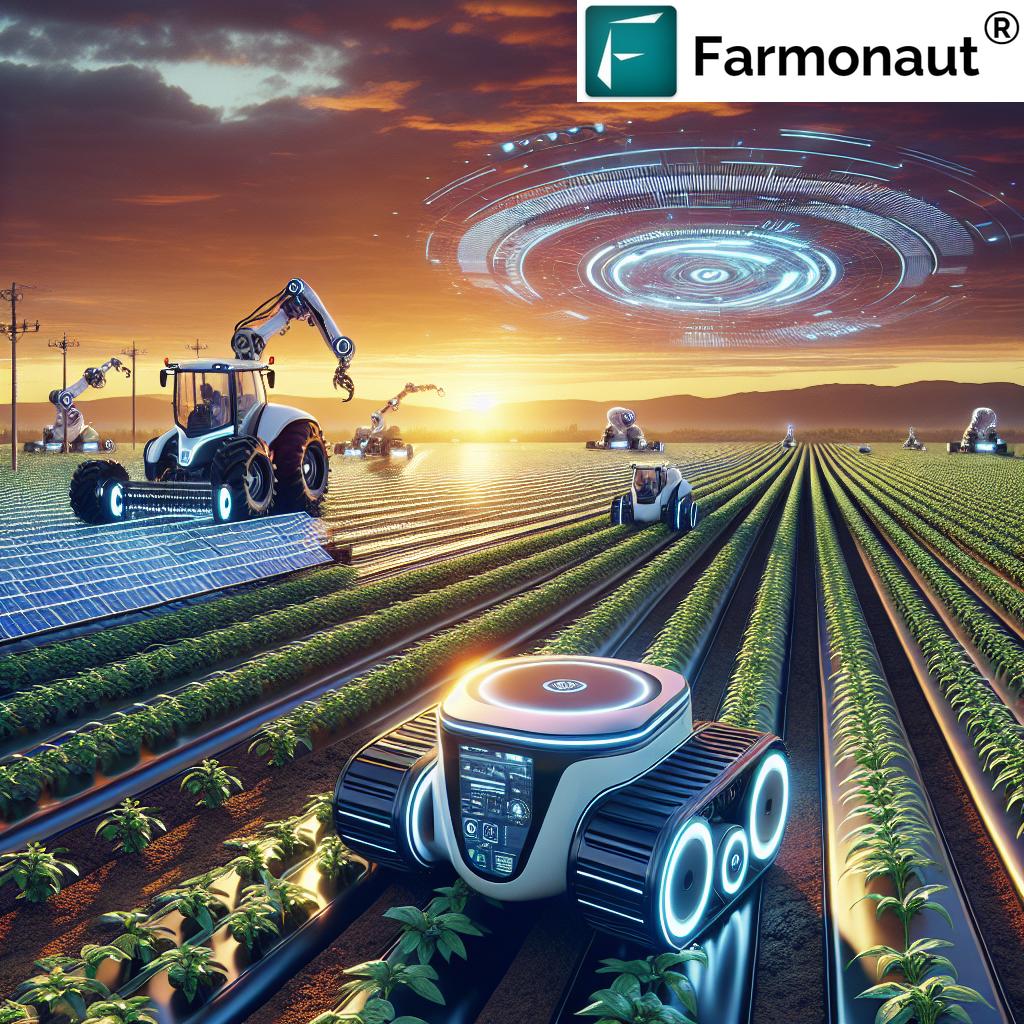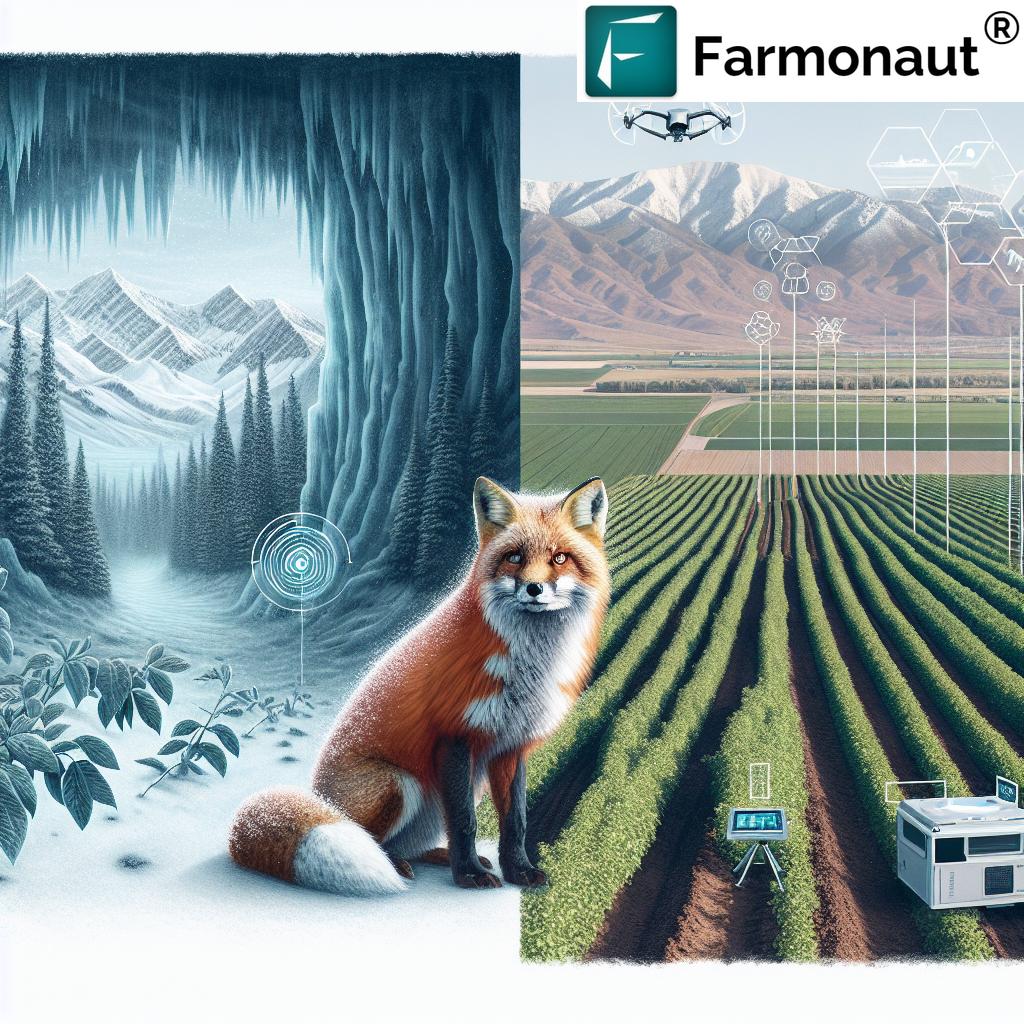Breakthrough in Florida’s Strawberry Industry: Advanced Breeding Technology Tackles Neopestalotiopsis Threat
“Florida’s strawberry industry, worth over $1 billion, faces a critical threat from the fungal disease neopestalotiopsis.”
In the heart of the Sunshine State, where strawberry fields stretch as far as the eye can see, a silent threat has been steadily growing. Neopestalotiopsis, a formidable fungal disease, has emerged as a critical challenge to Florida’s strawberry industry, threatening the very foundation of what many call the “Winter Strawberry Capital of the United States.” As we delve into this pressing issue, we’ll explore the innovative solutions being developed to combat this threat and secure the future of Florida’s cherished strawberry crops.

The Neopestalotiopsis Challenge
Neopestalotiopsis first reared its ugly head in Florida’s strawberry fields in 2017. By 2019 and 2020, the fungal disease had spread rapidly, causing significant damage to crops and sending shockwaves through the industry. The impact has been severe, leading to:
- Devastating crop losses
- Increased production costs
- Threats to farmers’ livelihoods
- Potential long-term damage to Florida’s billion-dollar strawberry sector
What makes neopestalotiopsis particularly challenging is the lack of commercially available strawberry varieties resistant to this disease. Growers have been forced to rely heavily on fungicides and intensive management practices, which are not only costly but also of limited effectiveness. This situation has created an urgent need for innovative solutions to protect Florida’s strawberry industry.
A Beacon of Hope: Advanced Breeding Technology
“Advanced breeding technology aims to develop neopestalotiopsis-resistant strawberries, with experimental trials set to begin in 2025.”
In response to this critical threat, a groundbreaking initiative has been launched to develop neopestalotiopsis-resistant strawberries using advanced breeding technology. This collaborative effort brings together leading agricultural institutions and leverages cutting-edge genetics research to combat crop damage and ensure the future of Florida’s strawberry industry.
The project aims to integrate disease-resistant traits into existing strawberry varieties, potentially revolutionizing crop protection methods and yield improvement techniques. By combining advanced genetics with sustainable farming practices, researchers hope to mitigate the effects of fungal outbreaks and reduce reliance on costly fungicides.

The Role of Technology in Modern Agriculture
As we witness this breakthrough in strawberry breeding, it’s crucial to recognize the broader role of technology in modern agriculture. Companies like Farmonaut are at the forefront of this agricultural revolution, providing innovative solutions that complement traditional farming practices.
Farmonaut’s satellite-based farm management solutions offer valuable insights for growers adopting new varieties and techniques. Through their web application and mobile apps, farmers can access real-time crop health monitoring, AI-based advisory systems, and resource management tools.
Timeline of Neopestalotiopsis-Resistant Strawberry Development
| Year | Research Phase | Key Activities | Expected Outcomes |
|---|---|---|---|
| 2024 | Initial Genetic Research | Identification of resistant traits, genetic mapping | Foundational knowledge for breeding program |
| 2025 | Experimental Trials Begin | First crosses of resistant traits with commercial varieties | Early-stage resistant plants for further study |
| 2026-2027 | Field Testing | Evaluation of resistant varieties in controlled field conditions | Selection of most promising resistant lines |
| 2028 | Advanced Trials | Large-scale field trials, yield assessments | Data on field performance and yield potential |
| 2029 | Regulatory Approval Process | Submission for variety registration and approval | Clearance for commercial release |
| 2030 | Commercial Release | Distribution of resistant varieties to growers | Widespread adoption, reduced fungicide use, improved yields |
The Impact on Florida’s Strawberry Industry
The development of neopestalotiopsis-resistant strawberries stands to have a profound impact on Florida’s strawberry industry. We anticipate several key benefits:
- Reduced Crop Losses: Resistant varieties will be less susceptible to neopestalotiopsis, leading to more consistent yields.
- Lower Production Costs: With reduced reliance on fungicides, growers can expect to see a decrease in their overall production expenses.
- Improved Fruit Quality: By focusing on disease resistance, breeders can also select for other desirable traits, potentially improving overall fruit quality.
- Sustainable Farming Practices: The new varieties will support more environmentally friendly farming methods by reducing chemical inputs.
- Economic Stability: A more resilient strawberry crop will help maintain the economic stability of Florida’s agricultural sector.
For farmers looking to optimize their strawberry production, Farmonaut’s technology can provide valuable assistance. Their Android app and iOS app offer tools for precise crop monitoring and management.
The Role of Integrated Pest Management
While the development of resistant strawberry varieties is a significant step forward, it’s important to view this breakthrough within the broader context of integrated pest management (IPM). IPM is a holistic approach to crop protection that combines various strategies to manage pests and diseases effectively while minimizing environmental impact.
The neopestalotiopsis-resistant strawberries will become a crucial component of IPM strategies for Florida’s strawberry growers. Here’s how this new technology fits into the larger picture of pest management:
- Genetic Resistance: The foundation of the new approach, providing plants with innate protection against neopestalotiopsis.
- Cultural Practices: Complementary techniques such as crop rotation, sanitation, and optimized planting schedules.
- Biological Control: Utilization of natural predators and beneficial microorganisms to suppress disease development.
- Monitoring and Forecasting: Regular field inspections and use of predictive models to anticipate disease pressure.
- Chemical Control: Judicious use of fungicides only when necessary, based on economic thresholds.
By integrating these resistant varieties into a comprehensive IPM program, growers can achieve more sustainable and effective long-term management of neopestalotiopsis and other strawberry diseases.
The Future of Strawberry Breeding
The breakthrough in neopestalotiopsis-resistant strawberries is just the beginning. This project opens the door to a new era of strawberry breeding, where advanced genetic techniques can be applied to address a wide range of challenges facing the industry. Future breeding efforts may focus on:
- Resistance to other diseases and pests
- Improved tolerance to environmental stresses like drought or heat
- Enhanced nutritional profiles
- Extended shelf life
- Improved flavor and aroma characteristics
As these advancements continue, the role of technology in supporting farmers will become increasingly important. Farmonaut’s satellite-based solutions and AI-driven insights can help growers make the most of these new varieties, optimizing their production practices for maximum yield and quality. Learn more about their services through their API and API Developer Docs.
Challenges and Considerations
While the development of neopestalotiopsis-resistant strawberries represents a significant breakthrough, it’s important to acknowledge the challenges and considerations that come with this new technology:
- Time to Market: The process of developing and commercializing new strawberry varieties is lengthy, requiring patience from growers and stakeholders.
- Adaptation to Local Conditions: Resistant varieties must be tested across various microclimates within Florida to ensure broad applicability.
- Consumer Acceptance: New varieties must meet or exceed consumer expectations for taste, appearance, and quality.
- Regulatory Hurdles: Approval processes for new plant varieties can be complex and time-consuming.
- Training and Education: Growers will need support to effectively integrate new varieties into their existing farming systems.
Addressing these challenges will require ongoing collaboration between researchers, breeders, growers, and industry partners. It’s a testament to the resilience and innovation of Florida’s agricultural community that such a comprehensive approach is being taken to tackle the neopestalotiopsis threat.
The Role of Artificial Intelligence in Agriculture
As we look to the future of strawberry breeding and production, it’s clear that artificial intelligence (AI) will play an increasingly important role. AI technologies can enhance various aspects of agricultural research and practice, including:
- Predictive Modeling: AI can help forecast disease outbreaks and optimize breeding programs.
- Data Analysis: Machine learning algorithms can process vast amounts of genetic and environmental data to identify promising traits.
- Precision Agriculture: AI-driven systems can provide real-time recommendations for crop management.
- Automated Phenotyping: AI-powered image analysis can rapidly assess plant characteristics, accelerating the breeding process.
Farmonaut’s Jeevn AI Advisory System is an example of how AI is being applied in practical, farm-level settings. This technology provides personalized farm advice based on satellite data and other inputs, helping farmers make informed decisions about their crops.
Economic Implications for Florida’s Agricultural Sector
The successful development and implementation of neopestalotiopsis-resistant strawberries could have far-reaching economic implications for Florida’s agricultural sector:
- Increased Competitiveness: Improved disease resistance could strengthen Florida’s position in the national and international strawberry markets.
- Job Creation: A thriving strawberry industry supports employment across the agricultural value chain, from farm workers to logistics and marketing professionals.
- Research Investment: Success in this project could attract further investment in agricultural research and development in Florida.
- Diversification: The technologies and methods developed could potentially be applied to other crops, diversifying Florida’s agricultural portfolio.
- Agritourism: A robust strawberry industry contributes to Florida’s agritourism sector, attracting visitors and supporting rural economies.
By safeguarding the strawberry industry, this initiative helps preserve a significant component of Florida’s agricultural heritage and economic foundation.
Environmental Considerations
The development of neopestalotiopsis-resistant strawberries aligns with broader environmental goals in agriculture:
- Reduced Chemical Use: Less reliance on fungicides means fewer chemicals entering the environment.
- Water Conservation: Healthier plants may require less irrigation, contributing to water conservation efforts.
- Biodiversity: Decreased pesticide use can support beneficial insect populations and overall ecosystem health.
- Soil Health: Sustainable management practices associated with new varieties can improve long-term soil quality.
For growers interested in monitoring the environmental impact of their farming practices, Farmonaut offers tools for tracking carbon footprints and resource usage. Explore these features through their web application.
Global Implications
While this project focuses on Florida’s strawberry industry, its implications extend far beyond state borders:
- Technology Transfer: The breeding techniques and resistant traits developed could be adapted for strawberry production in other regions facing similar challenges.
- Food Security: Improved disease resistance contributes to more stable food production systems globally.
- International Collaboration: This project may spark further international cooperation in agricultural research and genetic resource sharing.
- Climate Resilience: The development of more robust strawberry varieties aligns with broader efforts to create climate-resilient agricultural systems.
As the world grapples with the challenges of feeding a growing population in the face of climate change and evolving pest pressures, innovations like neopestalotiopsis-resistant strawberries serve as beacons of hope and progress.
FAQ Section
- Q: What is neopestalotiopsis?
A: Neopestalotiopsis is a fungal disease that affects strawberry plants, causing significant crop damage and yield losses. - Q: When was neopestalotiopsis first detected in Florida?
A: Neopestalotiopsis was first detected in Florida’s strawberry fields in 2017. - Q: How does neopestalotiopsis impact strawberry production?
A: It leads to crop losses, increased production costs, and threatens farmers’ livelihoods. - Q: What is the current method of managing neopestalotiopsis?
A: Currently, growers rely on fungicides and intensive management practices, which are costly and not highly effective. - Q: When are experimental trials for neopestalotiopsis-resistant strawberries set to begin?
A: Experimental trials are scheduled to commence in 2025. - Q: How will the development of resistant varieties benefit farmers?
A: It will help reduce crop losses, lower production costs, improve fruit quality, and promote sustainable farming practices. - Q: What role does advanced breeding technology play in this project?
A: Advanced breeding technology is used to integrate disease-resistant traits into existing strawberry varieties more efficiently. - Q: How long might it take for neopestalotiopsis-resistant strawberries to become commercially available?
A: Based on the timeline provided, commercial release could potentially occur around 2030, subject to successful development and regulatory approvals. - Q: Will these new varieties be effective against other strawberry diseases?
A: While the primary focus is on neopestalotiopsis resistance, the breeding program may also consider resistance to other common strawberry diseases. - Q: How can technology like Farmonaut’s solutions support farmers adopting these new varieties?
A: Farmonaut’s satellite-based crop monitoring and AI advisory systems can help farmers optimize their management practices for these new varieties, providing real-time insights on crop health and resource management.
Conclusion
The development of neopestalotiopsis-resistant strawberries represents a pivotal moment for Florida’s strawberry industry. By harnessing the power of advanced breeding technology and sustainable farming practices, this initiative offers hope for overcoming a significant threat to crop production. As experimental trials begin in 2025, the agricultural community eagerly anticipates the results that could reshape strawberry cultivation in Florida and beyond.
The journey towards neopestalotiopsis-resistant strawberries is more than just a scientific endeavor; it’s a testament to the resilience and innovation of Florida’s agricultural sector. By combining cutting-edge genetics with sustainable farming practices, this project paves the way for a more robust, efficient, and environmentally friendly approach to strawberry production.
As we look to the future, it’s clear that technology will continue to play a crucial role in agriculture. From advanced breeding techniques to satellite-based farm management solutions like those offered by Farmonaut, the tools available to farmers are more sophisticated and effective than ever before. By embracing these innovations, the strawberry industry in Florida is not just solving today’s problems but laying the groundwork for a more sustainable and productive future.
The breakthrough in neopestalotiopsis-resistant strawberries is more than just a win for Florida’s farmers; it’s a beacon of hope for agricultural communities worldwide facing similar challenges. As we continue to push the boundaries of what’s possible in crop breeding and management, we move closer to a world where food security and environmental stewardship go hand in hand.
For those interested in leveraging technology to enhance their agricultural practices, explore Farmonaut’s offerings through their web application, Android app, and iOS app. Together, we can build a more resilient and sustainable future for agriculture.

















